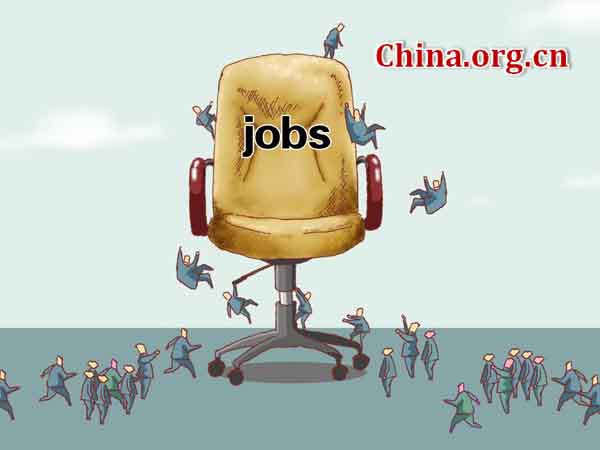Human development and what it reveals
- By Heiko Khoo and Michael Roberts
 0 Comment(s)
0 Comment(s) Print
Print E-mail China.org.cn, December 22, 2015
E-mail China.org.cn, December 22, 2015
|
|
|
The real world: fewer opportunities [By Zhai Haijun/China.org.cn] |
A new index of human development (HDI) has been created. The origins of the HDI are found in the annual Development Reports of the United Nations Human Development Programme (UNDP). These were devised and launched by the Pakistani economist Mahbubul Haq in 1990. The purpose was "to shift the focus of development economics from national income accounting to people-centered policies."
Human wellbeing is a multidimensional phenomenon of which income is only one part and so human development includes a healthy life, acquiring knowledge and achieving a decent standard of living.
The Historical Index of Human Development (HIHD) covers up to 157 countries from the mid-19th century - before large-scale improvements in health and primary education began - to 2007.
Social dimensions drove human development gains over the long run. Longevity accounts for the larger share during the first half of the 20th century. Enduring gains in lower mortality and higher survival were achieved as infectious disease gave way to chronic disease - experienced in developing regions from 1920 to the 1960s.
Medical progress - including the diffusion of the germ theory of disease (1880s), new vaccines (1890s), sulpha drugs to cure infectious diseases (late 1930s) and antibiotics (1950s) - produced major advances in longevity and quality of life. And economic growth contributed through nutrition improvements that strengthened the immune system, reduced morbidity, and expanded public health provision.
The index shows substantial gains in human development from the mid-19th century as the world industrialized and urbanized, especially during the period 1913-1970. A general advance in human development occurred between 1920 and 1950, due to substantial gains in life expectancy and education.
Although the gap between the advanced capitalist economies and the "Third World" widened in absolute terms, in relative terms it narrowed. The Russian revolution and China after 1949 brought rapid industrialization and dramatic improvements in health and education for hundreds of millions. And although World War II killed and displaced millions, it also laid the basis for the welfare state. State intervention came to be tolerated by capitalism after the war during the so-called "Golden Age."
After 1970, globalization, rising inequality, and the neo-liberal counter-revolution saw the gap in human development widen. Only China continued to close the gap. Longevity gains slowed down in most other emerging economies, and all the regions of the world have now lapsed in terms of the longevity index.
It is interesting to note the parallel connection between economic growth, narrowing inequality and human development between 1920-1970, and the reversal of those trends since 1970. In the 1970s and 1980s inequality between countries remained stable.







Go to Forum >>0 Comment(s)